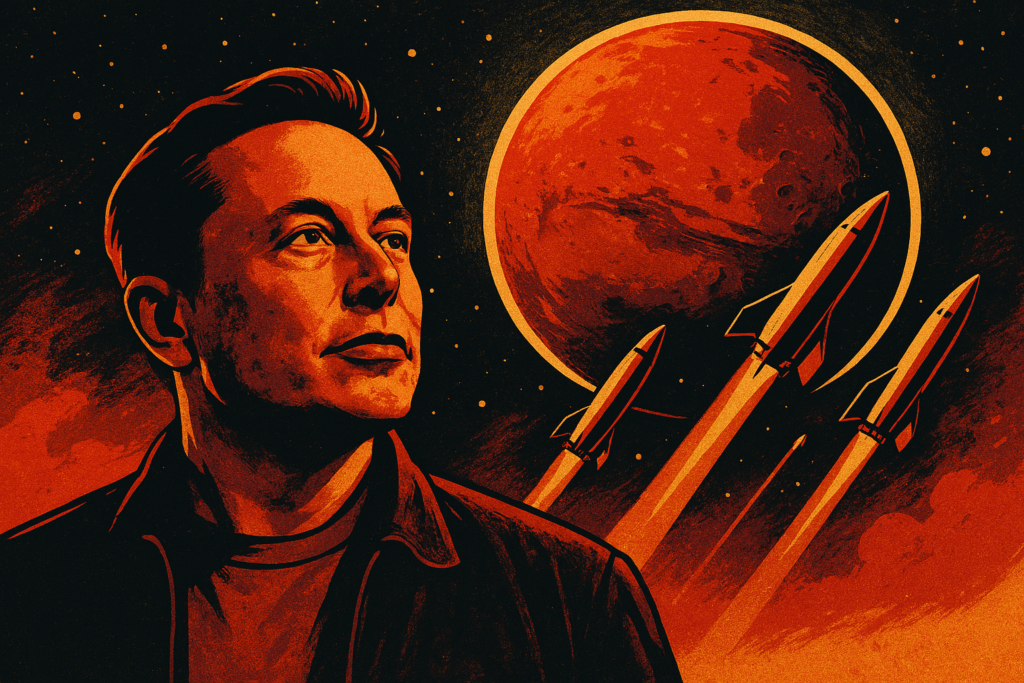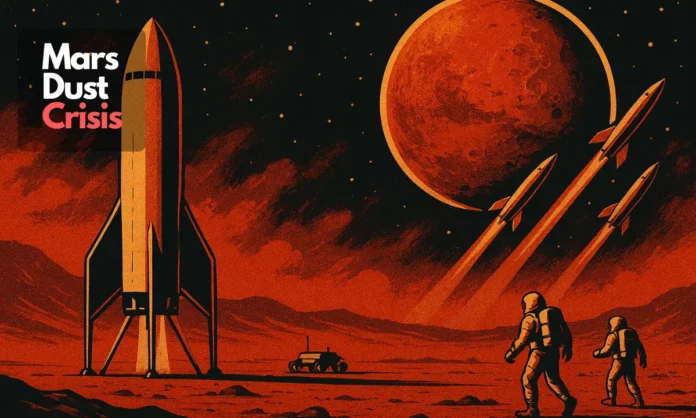Summary
- A new study highlights that Martian dust may pose serious and irreversible health risks to astronauts, threatening long-term human settlement.
- Scientists warn that the toxicity of fine dust particles could cause pulmonary diseases, while Mars’ harsh environment lacks the medical fallback Earth missions enjoy.
- The findings reignite debate on whether Mars colonization is a bold next step for humanity or a dangerously underprepared ambition led by SpaceX.
— Elon Musk (@elonmusk) March 22, 2025
Red Planet, Red Flags
Elon Musk has never been shy about his ultimate goal: colonize Mars, build a city, and make humanity a multiplanetary species. Through SpaceX’s Starship program and increasingly bold rhetoric, he’s cultivated a sense of destiny around the Red Planet—one that resonates with technologists, futurists, and even politicians eager for space prestige.
But a new problem may be harder to rocket past: Martian dust. Not as poetic as cosmic radiation or as cinematic as hostile alien terrain, but quietly, clinically lethal.
In a study published in GeoHealth, researchers from the University of Southern California and the University of Colorado Boulder have sounded the alarm. Martian dust—ubiquitous, unrelenting, and ultra-fine—could be one of the greatest threats to astronaut health. The findings reveal that inhaling just trace amounts could lead to long-term lung damage, potentially jeopardizing both short missions and Musk’s long-term colonization vision.
The Elon Musk Mars colonization health risks narrative just took a gritty, dangerous turn.
When Dust Becomes Deadly
- Martian dust contains toxic substances like silica and iron oxides, which may lodge permanently in astronaut lungs.
- The dust’s sharp, abrasive particles resemble asbestos and could trigger pulmonary fibrosis and chronic respiratory disease.
- Exposure risk is compounded by the fact that Mars’ storms cover the planet in thick dust layers every few years.
- Filtering and sealing against Martian dust remains a complex challenge for both habitats and space suits.
- There is no rapid evacuation option from Mars, meaning medical issues could turn fatal in isolation.
Unlike the relatively predictable threats of temperature or radiation, dust is insidious. It floats. It clings. It infiltrates even the most sophisticated filtration systems.
“We’ve known from the Apollo missions that lunar dust was problematic,” said Justin Wang, co-author of the study. “But Martian dust might be even more dangerous.” On Earth, we have the luxury of an atmosphere, medical facilities, and even surgical options for lung issues. On Mars, there’s no quick fix—only delay, degradation, and distance.
University of Leicester research fellow Julia Cartwright likened the particles to “asbestos”—razor-sharp, tiny, and inhalable. Once in the lungs, they could remain indefinitely, causing tissue scarring and long-term health deterioration.
Brian Hynek, another co-author, summed it up: “It’s constantly falling from the sky and covering everything. Every few years, dust storms engulf the entire planet.”
For the thousands of engineers working on SpaceX’s Mars program, that’s a logistical nightmare. For the doctors tasked with astronaut health, it’s something worse: an unsolvable equation.

Science Fiction vs. Science Warning
- Elon Musk envisions Mars cities with sustainable habitats, hydroponics, and human-led terraforming.
- SpaceX’s Starship is designed for large-scale transport to Mars, including cargo and future settlers.
- Medical scientists argue that Mars’ environment presents underestimated physiological risks.
- Past mission models have not fully accounted for persistent respiratory toxins from environmental dust.
- The new study forces a recalibration of long-term survival assumptions central to Musk’s vision.
The Elon Musk Mars colonization health risks aren’t just medical—they’re strategic. SpaceX has built its brand on bold, engineering-forward solutions. But this latest warning doesn’t have an easy engineering fix. No shield, seal, or sensor can fully prevent microscopic dust from accumulating over long missions.
Musk himself has previously admitted that Mars colonization would be dangerous. “You might die, it’ll be tough,” he once said. But the narrative was always framed around courage and sacrifice. Now, it’s about whether the very environment Musk seeks to conquer might be uninhabitable—not because of Martian creatures or resource scarcity, but because of the air you breathe.
This reality casts doubt on the viability of extended stays, let alone permanent settlements. You can recycle water. You can grow food in controlled chambers. But lungs are not recyclable, and Mars has no ICU.
Echoes from Apollo: We Should Have Known
- NASA’s Apollo missions reported dust-related complications during Moon landings, including eye irritation and breathing difficulties.
- Martian dust, finer and chemically more active than lunar dust, presents a magnified version of those risks.
- Robotic missions like InSight and Opportunity suffered power loss due to dust accumulation on solar panels.
- The toxicological behavior of Martian dust in human biology remains largely untested in real-time environments.
- The research underscores the need for pre-mission human trials and material testing under Martian simulant conditions.
If history is any guide, we should have seen this coming. During Apollo 17, astronaut Harrison Schmitt reported hay-fever-like symptoms after exposure to lunar dust. Engineers had not anticipated how corrosive the Moon’s regolith would be to both hardware and human biology.
The problem is exponentially worse on Mars. Unlike the Moon, Mars has winds. Its dust is finer, more reactive, and more mobile. It gets into every crevice—machinery, suits, and lungs alike.
Even NASA’s InSight lander, launched with full knowledge of Martian dust risks, was disabled early because its solar panels were caked beyond functionality. Rovers like Spirit and Opportunity faced similar fates.
The Apollo-era “dust is annoying” mindset must evolve into a 21st-century “dust is dangerous” doctrine. Because colonization isn’t about a weekend visit. It’s about survival—and science says we’re not ready.
Dust, Delays, and the Dawn of a New Caution
The Martian dust problem may not kill Musk’s dream—but it demands that it slow down, ask harder questions, and listen more to lungs than to rockets.
Colonization may still be possible. But it won’t happen on timelines built for headlines or presidential cycles. It’ll happen when our biology is as ready as our boosters.
Because between ambition and atmosphere lies a dusty, toxic truth: the most alien part of Mars might be the part we breathe.


